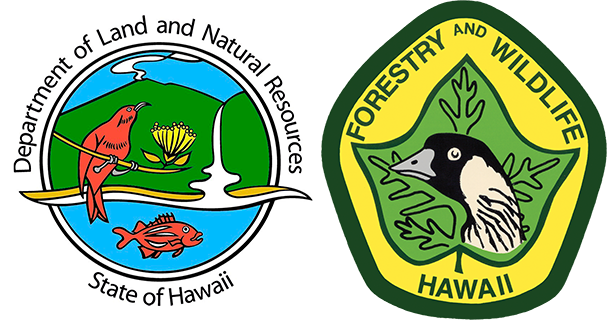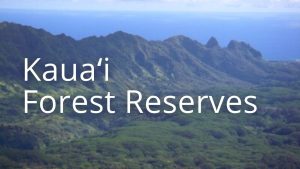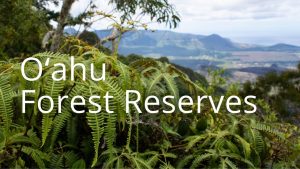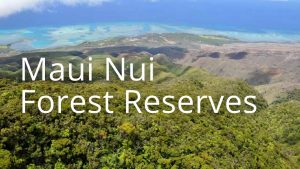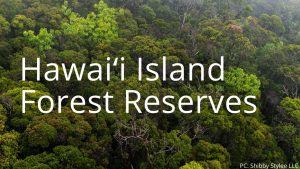Forest Reserve System

Hahai no ka ua I ka ululāʻau
Rains always follow the Forest

Kapapala Canoe Forest. PC: Shibby Stylee LLC
The Hawaiian Islands, the most isolated archipelago in the world, with high forested mountains and a multitude of climates provided a remarkable opportunity for the establishment of first plant, insect, and animal visitors that arrived on its shores. Polynesian settlers were the first humans to land on Hawai‘i’s shores, and with their arrival, they brought plants and animals that were needed to survive the long voyage and settle a new land. The settlers quickly learned how to use the forest resources of Hawai‘i for food, clothing, medicine, and shelter. Although they impacted the forests, Hawaiians understood the connection between water and life. Rain always follows the forests, without the rain there is no water, and with no water there is no life.
The Forest Reserve System was created by the Territorial Government of Hawai’i through Act 44 on April 25, 1903. With Hawai‘i’s increase in population, expanding ranching industry, and extensive agricultural production of sugarcane and later pineapple, early territorial foresters recognized the need to protect mauka (upland) forests to provide the necessary water requirements for the lowland agriculture demands and surrounding communities.
With its inception, the Forest Reserve System (FRS) represented a public-private partnership to protect and enhance important forested mauka lands for their abundance of public benefits and values. Though this original partnership has evolved over the decades, today the tradition is carried on by the Department of Land and Natural Resources, Division of Forestry and Wildlife (DOFAW) for public Forest Reserve lands.
The Forest Reserve System is managed under the guidance of the Hawai‘i State Constitution, Hawai‘i Revised Statutes (Chapter 183) and associated Hawai‘i Administrative Rules (Chapter 104). Through these directives DOFAW focuses its resources to protect, manage, restore, and monitor the natural resources of the FRS. Keeping with the original intention of the FRS, DOFAW provides recreational and hunting opportunities; aesthetic benefits; watershed restoration; native, threatened, and endangered species habitat protection and management; cultural resources; and fire protection among many other things. The public is generally welcome into any forest reserve provided it is not dangerous or detrimental to human life or the sensitive resources. The Forest Reserve System accounts for over 683,964 acres of state managed land, and without continued management these natural resources that provide a suite of ecosystem services to Hawai‘i residents and visitors to the islands, these resources would fade away.
Two important forest areas that are part of the reserve system are Laupāhoehoe Wet Forest (part of the Hilo Forest Reserve) and Puʻu Waʻawaʻa Dry Forest (part of the Puʻu Waʻawaʻa Forest Reserve), both on Hawaiʻi Island. These areas are utilized for the Hawai‘i Experimental Tropical Forest (HETF), which is part of a network of U.S. Forest Service (USFS) Experimental Forest and Range units across the United States. The USFS, Pacific Southwest Research, Institute of Pacific Islands Forestry, DLNR Division of Forestry and Wildlife, and the Division of State Parks work together to manage conservation research and education activities.
